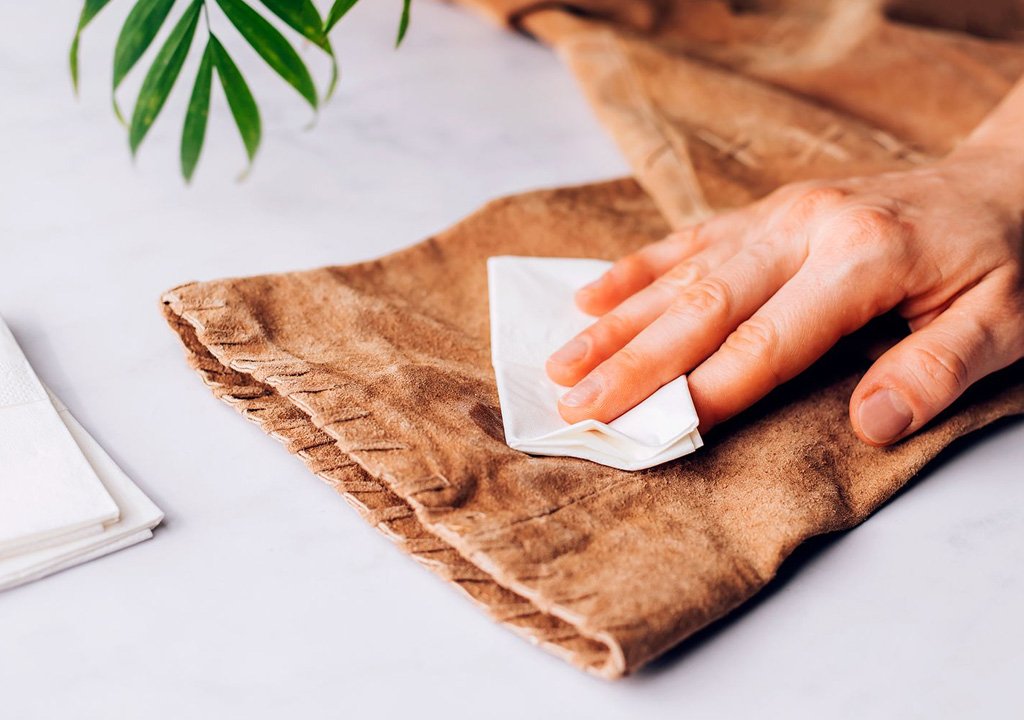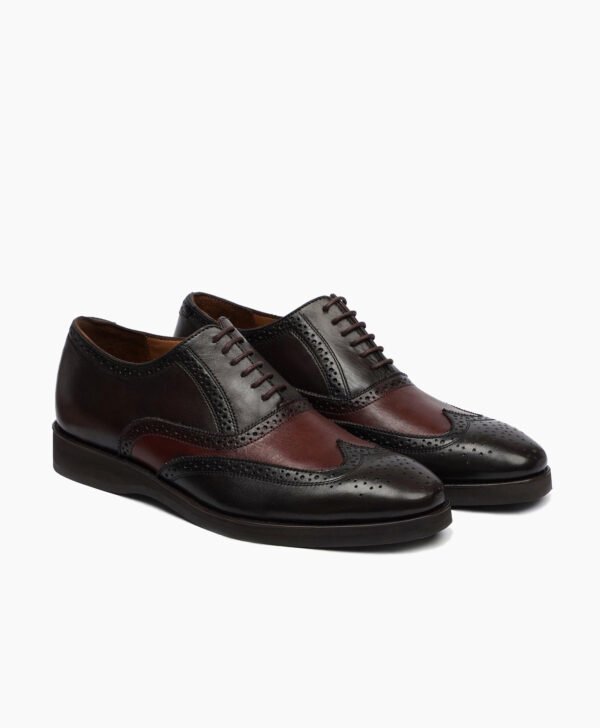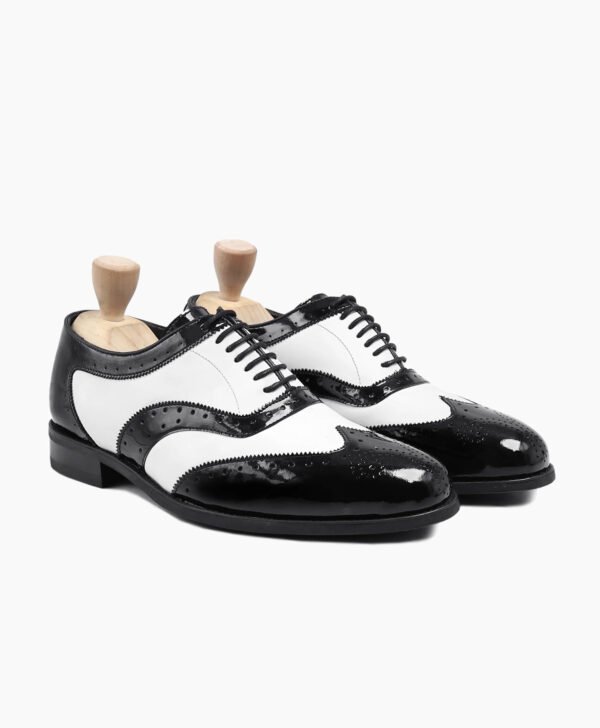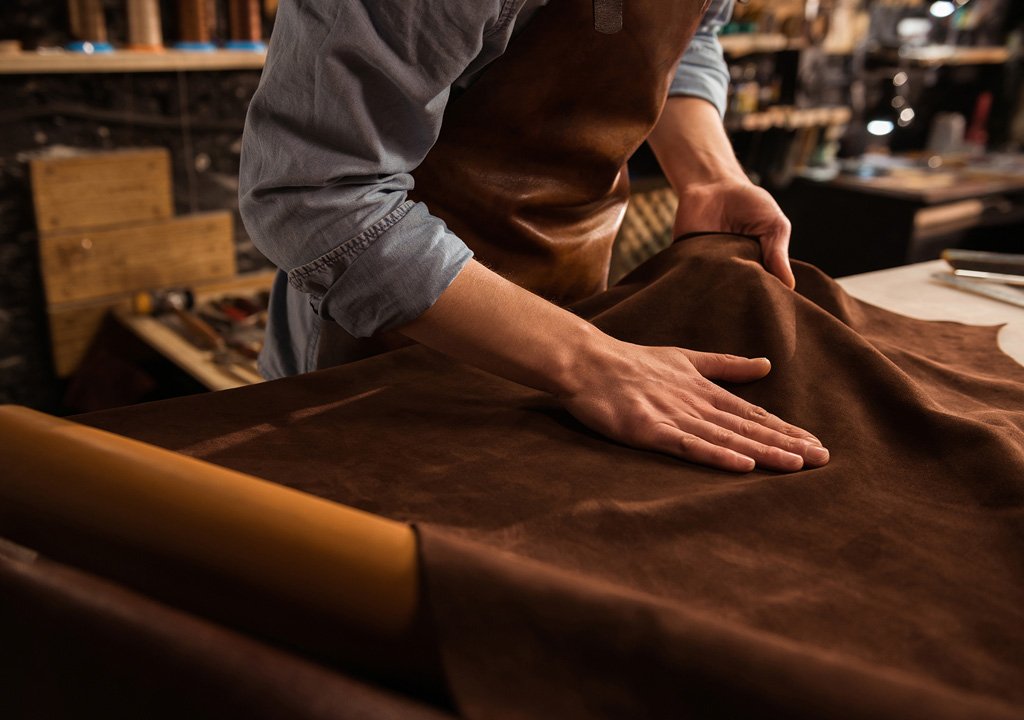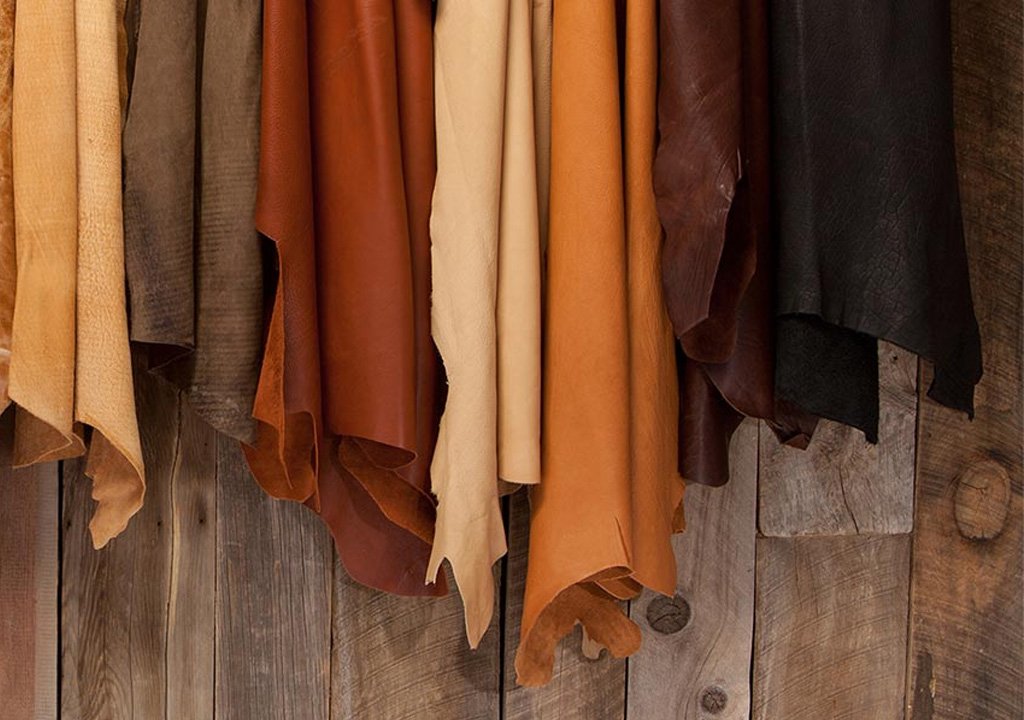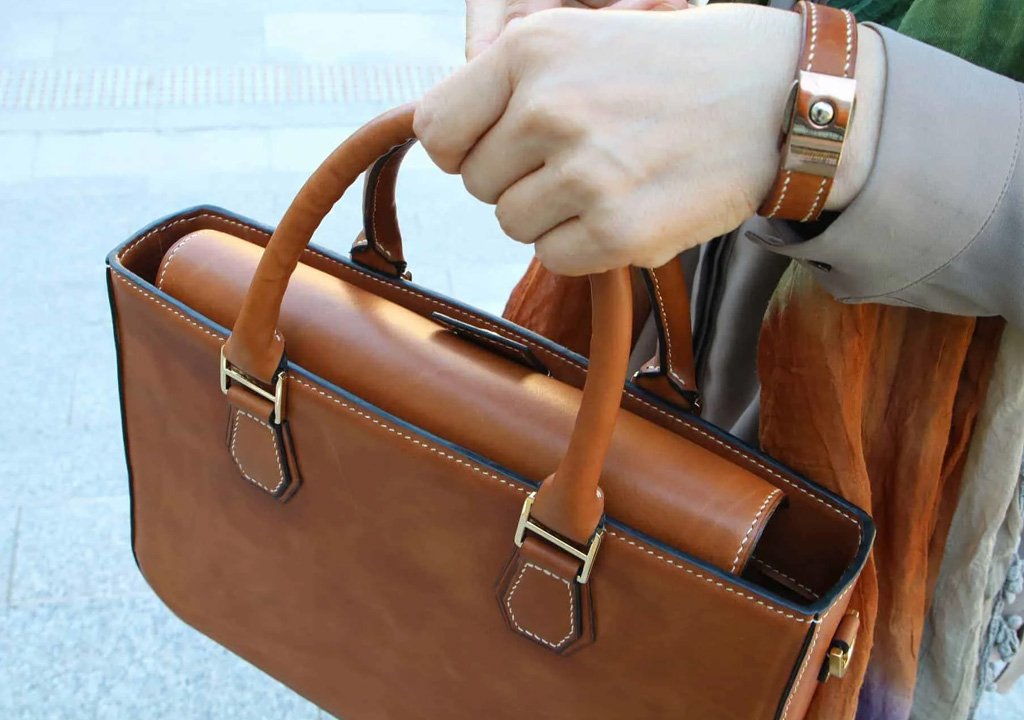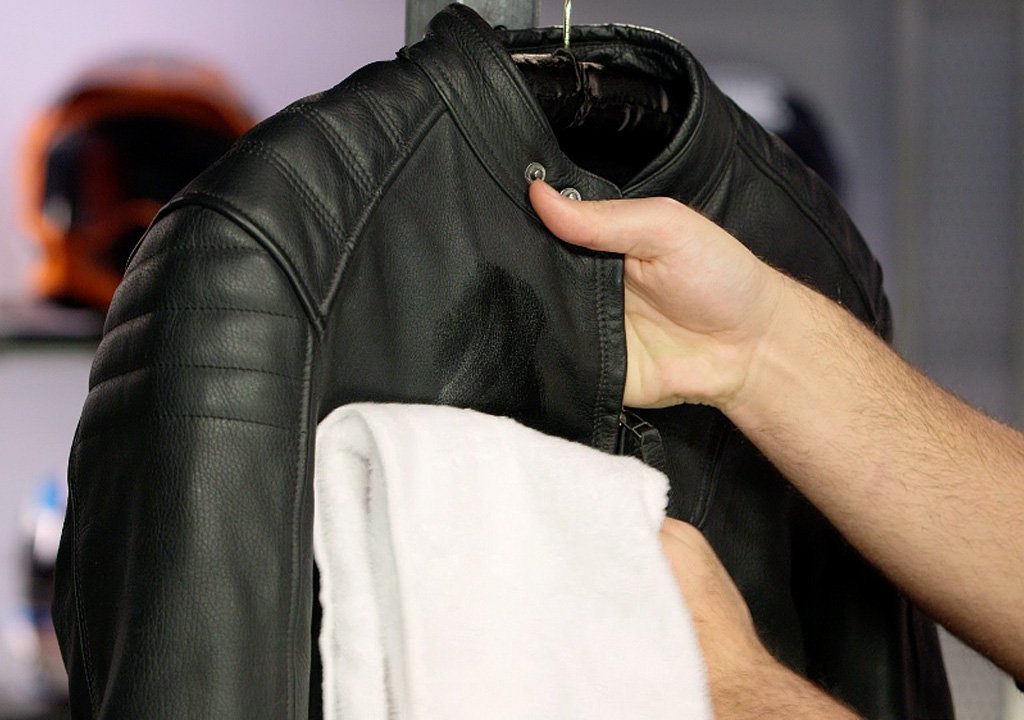Excellent advice! Taking care of a suede jacket requires special attention and care to ensure it remains in pristine condition. Using a two-sided suede brush and brushing in the direction of the grain helps keep the nap looking fresh. Immediate action to soak up spills and stains is crucial to prevent permanent damage. Gentle methods like using a white pencil eraser or a 50/50 water and vinegar solution can be effective in tackling stains. For more stubborn stains, absorbent substances like corn starch or baking powder can be left overnight. Steam cleaning, rubbing alcohol, and air drying are also useful techniques for stain removal, but patience and gentleness are key to avoiding any harm to the delicate suede material. If the jacket is heavily soiled, seeking assistance from a professional cleaner or suede specialist is a prudent choice.
How to Clean a Suede Jacket Collar
Treating a dirty suede jacket collar requires specific methods to restore its appearance. Applying corn starch or baking soda to the collar and leaving it overnight helps absorb grease and stains. Gently brushing the collar with a stiff brush can help lift off the absorbed particles. Repeating the process as needed can further improve the results. Suede cleaning kits, which include an eraser and a stiff brush, are also available and can effectively remove stains and residue from the collar. Using the eraser to gently rub the stain and then brushing away the residue with the brush can help restore the collar’s cleanliness.
Can You Put a Suede Jacket in the Washing Machine?
It is not recommended to put a suede or leather jacket in a washing machine, as water can remove the natural oils, cause dye to fade, and potentially lead to shrinkage. While there may be videos on the internet claiming successful results, leather experts advise against this practice. Instead of risking damage to your valuable garment, it’s advisable to send it to a specialist cleaner if it requires thorough cleaning. If you choose to machine wash as a last resort, turning the jacket inside out, using a warm wash cycle, and drying it slowly might mitigate potential damage. However, professional cleaning remains the safer option.
Can a Suede Jacket be Dry Cleaned?
Dry cleaning is indeed the recommended method for cleaning a suede jacket. It helps to maintain the delicate texture and appearance of suede while effectively removing dirt and stains. However, it’s important to choose a dry cleaner with expertise in handling suede garments to ensure the best results and prevent any damage to the material.
How to Dry a Suede Jacket
Correct, drying a suede jacket should be done with care to avoid damaging the material. It’s advisable to let it air dry naturally in a well-ventilated area away from direct sunlight or strong heat sources. This will help prevent any warping, fading, or other potential damage to the suede fabric.
Can You Put a Suede Jacket in the Dryer?
Exactly, using a dryer for a suede jacket can lead to irreversible damage such as shrinkage, warping, or cracking of the material. It’s always best to avoid using a dryer for suede or leather garments to preserve their quality and appearance.
How to Protect a Suede Jacket
Absolutely, taking preventative measures such as using suede protector spray, regular brushing, and proper storage can significantly extend the life of your suede jacket and keep it looking its best. Avoiding situations that could potentially stain or damage the suede will help maintain its overall quality and appearance over time.
Suede Leather Jacket Cleaner
Correct, using a commercially available suede cleaner can be effective for cleaning your suede jacket. Always make sure to follow the manufacturer’s instructions and perform a patch test on a hidden area to ensure that the cleaner doesn’t damage or discolor the suede.
Suede Jacket Stain Remover
Correct, there are various methods and products you can use to remove stains from suede jackets. Using a suede brush, distilled vinegar, a clean pencil eraser, or commercially available suede stain removers can help effectively eliminate stains from your suede jacket. Always test any product or method on a hidden area first to ensure it doesn’t cause any damage or discoloration.
Can You Iron a Suede Jacket?
While ironing suede can potentially remove wrinkles, it’s a delicate process that should be approached with caution. Iron the suede jacket inside out and use a cotton covering, like a pillowcase, as a barrier between the iron and the suede. Ensure the iron is set to the lowest heat setting and frequently check the suede to prevent overheating or damage. It’s advisable to seek professional advice or use alternative methods to avoid the risk of damaging your suede jacket.
Can You Steam a Suede Jacket?
Using steam to clean suede can help open up pores and remove dirt and bacteria. However, it’s important not to wet the suede or apply direct heat to the surface. You can use steam from sources like a kettle, steam iron, steam cleaner, or by hanging the garment in a bathroom with a hot shower running. Steam can also be effective in removing wrinkles from suede, but precautions should be taken to avoid direct moisture contact and excessive heat.
How to Condition a Suede Jacket
Absolutely, using a suede conditioner is recommended to keep your suede jacket in good condition. Prior to applying the conditioner, brush the suede in different directions using a suede brush. This helps the conditioner to be absorbed more effectively and maintain the quality of your jacket.
Suede Jacket Polish
Polishing suede with traditional shoe or leather polish should be avoided. Using such products on suede can damage its delicate texture and appearance. Instead, it’s important to use specially designed suede brushes and cleaners to maintain the quality of your suede jacket.
Will a Suede Jacket Get Ruined in the Rain?
Suede jackets are not well-suited for wet conditions due to their porous nature and vulnerability to water damage. It’s crucial to protect your suede jacket from moisture to maintain its texture and appearance. Using a suede protector spray can offer some level of water resistance, but it’s still advisable to avoid wearing it in heavy rain or damp environments.
Can a Suede Jacket Get Wet?
While it’s best to wear your suede jacket in dry conditions, there are times when it may get wet. Water marks on suede can be removed, and a pre-proofed jacket will offer some level of water resistance to handle light rain. Just remember that excessive exposure to water can still cause damage to suede, so it’s wise to be cautious in wet conditions.
How to Protect a Suede Jacket From the Rain
Indeed, using a suede protector spray can provide a level of water resistance and help protect your suede jacket from light rain. Regular reapplication of the spray is recommended to maintain the protective barrier and keep your jacket looking its best. However, it’s important to remember that even with protection, suede should still be kept away from heavy rain and wet conditions.
Will Snow Ruin a Suede Jacket?
While snow may initially have less damaging effects on a suede jacket compared to heavy rain, it’s still important to exercise caution. As snow accumulates, it can eventually melt and saturate the suede, leading to potential damage over time. It’s advisable to avoid prolonged exposure to snow and to remove any snow buildup from your suede jacket as soon as possible to prevent moisture absorption and potential damage.
Can You Stretch a Suede Jacket?
Suede indeed has the characteristic of being quite stretchable and capable of molding to the wearer’s body over time. If your suede jacket feels a bit tight initially, wearing it will naturally help it loosen up and conform to your body shape. Additionally, using a leather stretching spray specifically designed for suede can expedite the stretching process without causing damage. However, more aggressive methods like immersing the jacket in water should be avoided, as they can have adverse effects on the leather.
Can You Dye a Suede Jacket?
Indeed, suede’s porous nature allows it to readily absorb dye, making it possible to change the color of a suede jacket. If you’re looking to dye your jacket, you have the option to either have it professionally dyed or attempt the process yourself using a suede dye kit. Achieving an even color when dyeing suede at home can be challenging, so multiple applications might be necessary for a satisfactory outcome. For optimal results and to avoid potential mishaps, seeking assistance from a specialist or professional dyer is recommended.
Can a Suede Jacket be Altered?
A suede jacket can be altered but this is a job for a skilled tailor.
Can a Suede Jacket be Tailored?
A skilled tailor can make a suede jacket smaller.
Can You Shrink a Suede Jacket?
If you immerse your suede jacket in cold water or put it in your washing machine, it will shrink, however you will probably ruin the garment in the process and is therefore not advised.
How to Waterproof a Suede Jacket
There are a wide range of waterproofing and protective sprays available. Spray the whole jacket evenly and reapply every four two six weeks.
How to Deodorize a Suede Jacket
Absolutely, using baking powder or coffee grounds to absorb odors from a suede jacket can be effective. However, it’s important to exercise caution when applying these substances directly to the garment, as they could potentially leave marks or stains. A safer approach is to place baking powder or coffee grounds in a bag or envelope, and then put this sealed bag together with the jacket in another sealed bag. This way, the baking powder or coffee grounds can gradually absorb odors from the jacket without direct contact. Allow several days for the process to be effective.
How to Store a Suede Jacket
Proper storage is crucial to maintain the condition of a suede jacket. Storing your suede jacket in a cool, dry place away from direct sunlight will help prevent fading, drying, and damage to the material. Using a shaped hanger that is appropriate for the size of the jacket will help maintain its shape and prevent stretching.
Suede Jacket Rip
Repairing a suede jacket should ideally be done by a specialist tailor who is experienced in working with leather materials. If you decide to repair it yourself, using a leather repair kit with a patch designed to be placed under the suede is important to achieve a seamless and effective repair. However, for the best results and to preserve the integrity of the jacket, seeking professional help is recommended.
How to Repair a Suede Jacket
Repairs to suede jackets are possible but should be approached with caution. Small repairs or stitching can often be done at home with the right tools and techniques, but for more complex issues or significant damage, seeking the help of a professional tailor or leather repair specialist is recommended to ensure the best outcome and preserve the quality of the jacket.
Suede Jacket and Rust
Rust stains on suede can be quite challenging to remove. Using a suede eraser or a specialized suede stain remover might help in some cases. However, for stubborn rust stains, it’s best to consult a professional suede cleaner or leather repair specialist to avoid further damage to the suede material.
Suede Jacket Smells Musty
Yes, placing baking powder or coffee grounds in a bag or envelope and then placing that in a sealed bag with your suede jacket can help absorb odors over time. This indirect method can prevent the baking powder or coffee grounds from directly touching the suede and causing marks or stains on the material. It’s a practical way to freshen up your suede jacket without risking any damage.
Suede Jacket Gone Hard
To restore the natural suppleness of suede, you can follow these steps:
- Thoroughly clean the suede using a suede brush, brushing it in various directions to lift the nap and remove dirt.
- Apply an appropriate suede conditioner to nourish and soften the material. Make sure to follow the manufacturer’s instructions.
- Some conditioners suggest warming the garment to help the conditioner penetrate the suede fibers. You can use a blow dryer on a warm setting, but avoid applying too much heat, as excessive heat can damage the suede. Keep the blow dryer at a safe distance from the suede and avoid direct contact.
This process can help rejuvenate the texture and feel of your suede jacket, making it more supple and comfortable to wear.
Suede Jacket Faded
Indeed, restoring the color of a faded suede jacket can be achieved through dyeing, but it’s important to consider the following points:
- Even Fading: If the jacket has faded evenly, the dyeing process is generally easier and more successful.
- Professional vs. DIY: You can choose to have the jacket dyed by a professional leather specialist for more consistent and reliable results. Alternatively, you can try dyeing it yourself using a commercially available suede dye.
- Color Matching: Achieving an exact color match can be challenging, especially with home dyeing. It’s recommended to choose a dye color that’s slightly darker than the original color, as it can be difficult to lighten suede once it’s dyed too dark.
- Even Application: Ensure thorough and even application of the dye to prevent patchiness. Follow the dye manufacturer’s instructions carefully.
- Multiple Applications: Achieving the desired color may require multiple applications of the dye, so be patient and take your time.
- Testing: Always perform a patch test in an inconspicuous area before applying the dye to the entire jacket to check the color and compatibility.
Restoring the color of a suede jacket through dyeing can give it a refreshed and renewed appearance, extending its life and enjoyment.
Suede Jacket Bleeding
Exactly, “bleeding” refers to the loss of dye from the suede material, resulting in color transfer or fading. To prevent bleeding and maintain the color integrity of your suede jacket:
- Suede Protector: Regularly applying a suede protector spray helps create a barrier that reduces the risk of dye bleeding. Applying the protector once a month or as recommended can help preserve the color and prevent color transfer.
- Quality Suede: Higher quality suede jackets are less likely to experience bleeding. Investing in a well-made suede jacket can provide better color retention and overall durability.
- Avoid Moisture: Moisture, including rain and spills, can contribute to dye bleeding. Avoid exposing your jacket to wet conditions whenever possible.
- Professional Restoration: If your jacket experiences significant bleeding or fading, seeking professional help from a leather specialist may be necessary. They can assess the extent of the issue and provide appropriate solutions, such as re-dyeing the jacket.
By taking preventive measures and maintaining your suede jacket properly, you can reduce the risk of dye bleeding and keep your jacket looking its best.
Suede Jacket Shedding
Absolutely correct! Shedding refers to the small particles or fibers of suede becoming detached from the surface of the jacket, often leading to a slight fuzziness or shedding effect. To manage shedding and maintain the appearance of your suede jacket:
- Regular Brushing: Use an appropriate suede brush to gently brush the surface of the jacket. Brushing in the direction of the grain can help remove loose particles and fibers, preventing them from shedding further.
- Gentle Handling: Avoid excessive friction, rubbing, or harsh handling of the suede, as this can contribute to shedding. Handle the jacket with care to minimize stress on the material.
- Suede Protector: Applying a suede protector spray can help seal the surface of the suede and minimize shedding by keeping the fibers in place.
- Store Properly: Store your suede jacket in a cool, dry place away from direct sunlight and moisture. Proper storage can help reduce shedding caused by environmental factors.
By taking these preventive measures and providing gentle maintenance, you can manage shedding and enjoy your suede jacket for a longer period without excessive fiber loss.

